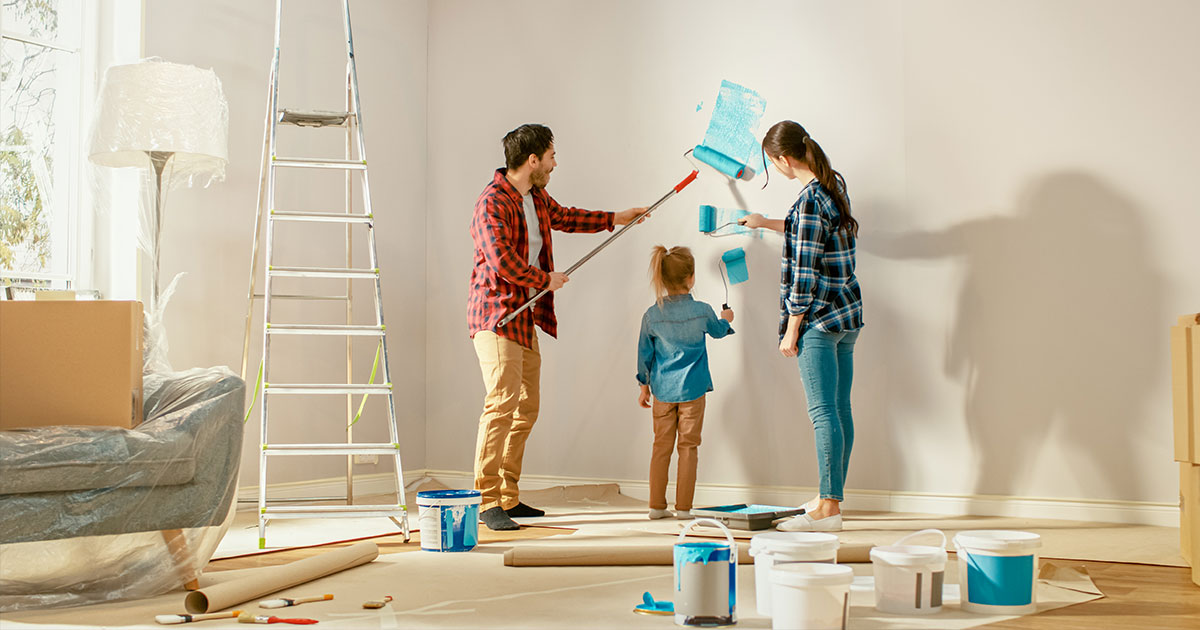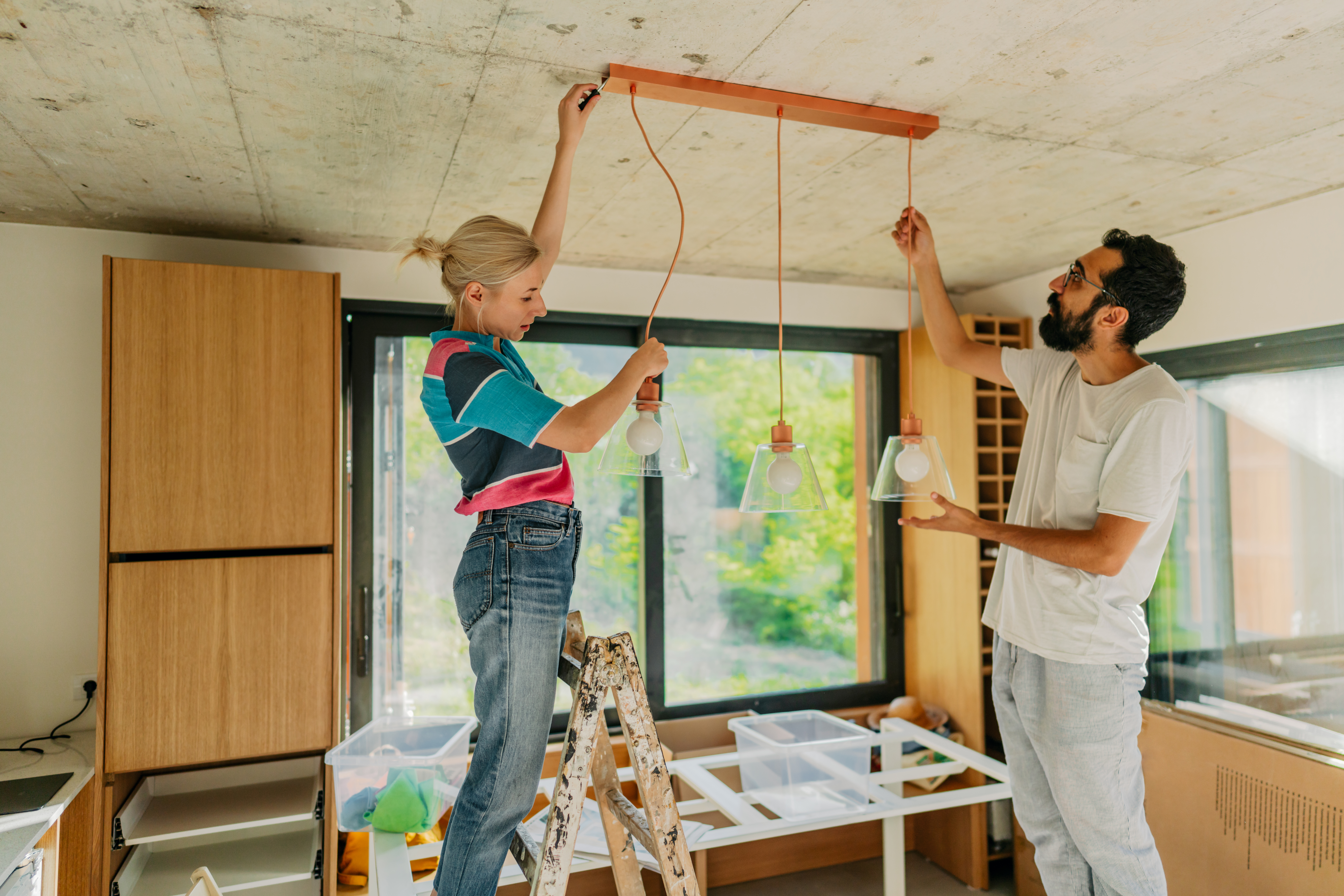If you’re sick and tired of staring at the walls in your home, you’re not alone. The number of home listings is up 10% compared to November 2019 as people realize the space they’re in used to work fine but isn’t enough when you’re home 24/7! It also looks like the moving trend will continue in 2021.
If you’re hoping to make a move this year, you have the opportunity to make top dollar as high demand for houses continues. The key is making sure your home is in ‘top-dollar shape.’ It may take a bit of work, but putting in the time and effort to make your home really shine can help it stand out on the market, which can lead to more money and potentially more offers. Starting one month ahead of when you want to list your home, use the following timeline to help you get your home ready for sale.
Countdown for Prepping your Home to Sell
4 Weeks Out
- Put on your “buyer’s glasses” and take a walk through (and around) your home. Look for anything a buyer might notice that could deter them from wanting to buy and put it on a maintenance to-do list for the next four weeks. Test for loose door handles, check for dripping faucets, make note of wall dings and chipped paint. As homeowners, we quit noticing these things after a while, but buyers will spot them immediately and can get the impression the house isn’t well-cared for.
- Prep for and tackle any major projects. If, during your walk-through, you realize you need to repaint an entire room, stain a fading deck, replace worn-out carpet or even replace an old roof, now is the time to tackle those issues. It may seem counterproductive to spend money on a house you’re going to sell, but you may be able to make up the cost in the selling price of your home and you don’t want buyers scared off by big repairs. Alternatively, you can acknowledge needed repairs (such as new carpeting) and include seller credits, which will reduce the home sale price and give the buyers the opportunity to make updates to the home as they see fit.
3 Weeks Out
- Create a decluttering schedule and get started. No matter what your decorating style, buyers are looking to purchase your dwelling not the stuff in it. Have lovely hardwood floors? Take up the area rugs. Built-in bookcases? Remove 70% of everything (especially family photos) to create a clean, uncluttered look that leaves just enough to highlight the feature. Since you’re planning to move anyway, go ahead and pack up these items.
- Don’t stuff everything in closets. Everyone dreams of living in a clean, organized home, even if they have no skills for keeping it that way. You want buyers to believe your home offers so much storage they’ll get the uncluttered life they imagine, which may mean removing a LOT of stuff from your cabinets, closets and other storage spaces. If your home is packed to the brim, go ahead and pack up everything you can live without for a few months and put it in a storage unit or container (take the decluttered items from above as well!).
2 Weeks Out
- Clean up from the curb up. Buyers see the exterior of your home first, so make sure it looks welcoming and well-cared for. Mow the lawn, trim bushes, pull weeds. If you have time and can spend about $300, put in fresh mulch and some pretty flowers and invest a bit in your front entry. A fresh coat of paint on the door, some potted plants and a new welcome mat can create an inviting entrance to your home.
- Remove and replace items to keep. For the most part, items that are attached to your home, like curtains and light fixtures, are supposed to stay with the home. If you have any items like this that you want to take with you, it can be simpler to go ahead and replace the fixture with one that will stay. This can help prevent any sticking points during contract negotiations, and the item will be packed and ready to move with you.
1 Week Out
- Clean, clean, clean. People are about to be walking through your home and—literally—grading it. The last thing you want is dust bunnies to hurt your sale price or even potential offers. Start wiping and dusting at the ‘top’ of a room (crown molding, ceiling fans, blinds, etc.) and work your way down until finally cleaning the floors.
- Take amazing photos and video (or hire a pro). Most people will inspect your home online long before seeing it in person, so photos can make or break the level of interest. Your realtor (or you) will choose a sunny day to open all the windows and blinds to let natural light pour in and capture key selling features like the beautiful fireplace or walk-in pantry. Be sure to take pictures from wide angles so buyers get a sense of space. Especially these days, a comprehensive video tour could reduce the number of showings (in a good way!) to those who are truly interested in making an offer.
Day Before Open House
- Give it the ‘sniff test.’ It’s easy to become blind to the smells in our own home like last night’s dinner or the cat’s litterbox. Ideally, have a trusted friend or your realtor come by to give you an honest opinion of any problem areas. Avoid cooking anything smelly, and if you can, open windows to let fresh air in. Carefully use scented candles or spray to brighten the air, but don’t use too many or strong fragrances that you overdo it. A neutral or clean smell is best.
- Start saying goodbye. You may have grown tired of your space, particularly over the last year, but it can be difficult to let go of something so personal. Take time to enjoy the memories in your space while also wishing it farewell. It can feel positive to wish blessings on the new owners and the new memories they’ll create, while also looking forward to your new home.
Selling a home can be complicated, frustrating at times and time consuming. An experienced professional realtor can provide the assistance needed to make the process go smoothly and many times quicker because of the client base of potential buyers that they can bring to your home.






 Federally Insured by NCUA |
Federally Insured by NCUA |  Equal Housing Opportunity |
Equal Housing Opportunity |